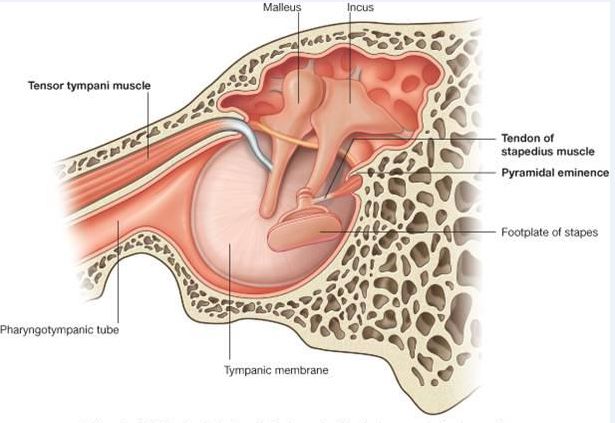4.1.6 What does the Hammer Muscle do?

The hammer muscle adjusts tension on the ear drum and releases Eustachian tube pressure.

The hammer muscle (tensor tympani) as its name suggests, adjusts the tension on the ear drum. It also has several branches which affect the closing and opening of the Eustachian tube.
Therefore if the hammer muscle is flexible and responsive, the Eustachian tube will open and close normally, and blocked ear or pressure ear problems will normally be resolved.
The hammer bone, which is attached to the ear drum, controls the tension on the ear drum and therefore it’s receptivity to incoming sounds. In effect then, this muscle determines whether our ear is open or closed to incoming sounds. The whole middle ear system responds to sounds of different frequency and amplitude. Therefore when presenting the ear with constantly alternating tones, the hammer muscle receives a work out and is forced to become stronger, more flexible and more responsive to the variation in sound.
The hammer muscle pulls the hammer bone at right angles to the normal direction of vibration, thus dampening the vibration when contracted.


If the muscle is constantly activated by prolonged tension and stress or from a trauma such as acoustic shock, it may severely affect its function. This may put the muscle into a state of chronic contraction causing a fluttering sensation in the ear. This condition is known as tensor tympani syndrome.
Sound Therapy has been known to help this condition. But in addition, Dr Tomatis suggested that the middle ear muscles may be prone to much more subtle stiffness or failing, causing a range of ear conditions which are not widely recognised, but which will respond to retraining through Sound Therapy.

